Chemical Technology Incubator
The Chemical Technology Incubator is a specialized research and development unit operating within the Poznań Science and Technology Park. It supports the development and commercialization of innovative solutions in the fields of chemistry and materials engineering. It plays a vital role in the regional innovation ecosystem by bridging the gap between scientific potential and the needs of the chemical and materials industries, serving as a link between research and the practical implementation of modern technologies.
Co oferujemy?
The Chemical Technology Incubator is a specialized research and development unit operating within the Poznań Science and Technology Park. It supports the development and commercialization of innovative solutions in the fields of chemistry and materials engineering. It plays a vital role in the regional innovation ecosystem by bridging the gap between scientific potential and the needs of the chemical and materials industries, serving as a link between research and the practical implementation of modern technologies.
Specialization and Research Offer
The Chemical Technology Incubator focuses on the design and implementation of modern chemical technologies, with particular emphasis on:
• the synthesis and characterization of organosilicon compounds,
• surface modification of materials to impart specific functional properties,
• technology consulting and the transfer of knowledge and technology to industry.
We are equipped with modern research and analytical infrastructure, enabling us to carry out projects on both laboratory and semi-technical scales, including the synthesis of organic and inorganic compounds in quantities ranging from several to several dozen kilograms. Our competencies cover the full spectrum of activities—from chemical structure design, through application testing, to technological implementation.
Organosilicon Compounds – Design and Applications
One of the Incubator’s key areas of specialization is the design and synthesis of dedicated organosilicon compounds, such as silanes, polysiloxanes, silsesquioxanes, and siloxane resins, tailored to specific functional and technological applications. The scope of work includes:
• selection of chemical structure (e.g., chain length, type of functional groups),
• design of multifunctional molecules (combining, e.g., hydrophobicity, adhesion, microbiological resistance),
• molecular property modeling and surface interaction studies,
• optimization of synthesis pathways and scale-up of processes for industrial requirements.
Advanced Surface Modification of Materials
The Incubator conducts comprehensive work on the surface modification of both natural and synthetic materials to enhance their usability and functionality. Representative material groups under investigation include:
• textiles (cotton, blends, technical fabrics),
• natural stone, concrete, ceramics,
• glass and transparent surfaces,
• wood, plastics, composites.
Thanks to advanced organosilicon systems, materials can be endowed with properties such as:
• hydrophobicity and superhydrophobicity,
• oleophobicity,
• antimicrobial and antifungal activity,
• flame retardancy,
• anti-fogging and anti-misting properties,
• easy-to-clean and self-cleaning effects,
• color and gloss stabilization,
• improved adhesion of protective coatings.
Collaboration with Science and Industry
The Chemical Technology Incubator actively collaborates with partners from both the scientific and industrial sectors. We are open to joint R&D projects, both national and international, funded through public programs or on a commercial basis. We offer:
• implementation of R&D tasks in applied chemistry and materials engineering,
• development and implementation of new products and technologies,
• technology consulting in surface functionalization,
• tailored solutions for specific industrial needs,
• full support from concept to implementation stage.
We invite companies, scientific institutions, and project teams looking for a reliable partner in modern chemical technologies to collaborate with us.
Selected Projects Implemented by the Chemical Technology Incubator
• NCBiR 156000 (contract no. INNOTECH-K1/IN1/15/156000/NCBR/12), project under the INNOTECH program, “Implementation of the production of functionalized silsesquioxane precursors”, (2012–2015)
• 180480 (contract no. PBS1/A5/17/2012), project under the Applied Research Program, “New organosilicon agents for the finishing of natural fibers and textiles”, 2012–2015, consortium: FUAM – Leader, Institute of Natural Fibers and Medicinal Plants, Andrzej Borzykowski Jacquard Linen Fabrics
• PBS1/B9/7/2012, project under the Applied Research Program, “High-performance substrates for the synthesis of biomolecules on solid phase”, 2012–2015, consortium: Future Synthesis Sp. z o.o. – Leader, Institute of Bioorganic Chemistry PAS, FUAM
• UMO-2012/05/B/ST5/00375, Microreactor systems for process intensification and synthesis of organofunctional silanes and their derivatives in ionic liquid media as a new polar aprotic solvent, OPUS, 2013–2016
• INNOTECH-K3/IN3/39/22131/NCBR/14, Development and implementation of organosilicon compounds for the functionalization of synthetic rubbers, project under the INNOTECH program, 2014–2016, consortium with Synthos SA
• PBS3/A1/16/2015, Advanced synthesis technologies for functionalized silsesquioxanes for special material applications, funded by the National Centre for Research and Development under the Applied Research Program, 2015–2018, CZT UAM – leader, FUAM
• 0037/NPRH4/H2b/83/2016, Cultural Heritage – search for modern agents and methods for the conservation of historic wood, National Program for the Development of Humanities, Module ‘Development’ 2.b, 2016–2019, consortium member
• UMO-2018/29/B/ST8/00913, Synthesis and characterization of materials with defined surface properties, OPUS, 2019–2023
• 2020/37/B/ST5/03266, Organosilicon derivatives containing phosphate and aminophosphate groups as new flame retardants for textiles, OPUS 19, 2021–2025
Selected Scientific Publications Authored by the Chemical Technology Incubator
• M. Broda, I. Dąbek, A. Dutkiewicz, M. Dutkiewicz, C-M. Popescu, B. Mazela, H. Maciejewski, Organosilicons of different molecular size and chemical structure as consolidans for wood – a new reversible and retreatable method, Scientific Reports, 10 (2020), (2188), https://doi.org/10.1038/s41598-020-59240-8
• O. Bartlewicz, M. Pietrowski, M. Kaczmarek, H. Maciejewski, SILP materials based on TiO2-SiO2 and TiO2-SiO2/lignin supports as new catalytic materials for hydrosilylation reaction – synthesis, physicochemical characterization and catalysis, RSC Adv., 11 (2021), 23355–23364
• Szymańska, M. Dutkiewicz, H. Maciejewski, M. Palacz, Simple and effective hydrophobic impregnation of concrete with functionalized polybutadienes, Construction and Building Materials, 315 (2022), 125624
• Szymańska, M. Przybylak, H. Maciejewski, A. Przybylska, Thiol-ene chemistry as an effective tool for hydrophobization of cotton fabrics, Cellulose, 29 (2022), 1231–1247
• M. Przybylak, A. Przybylska, A. Szymańska, H. Maciejewski, Superhydrophobization of cotton textiles by difunctional cyclic siloxanes via thiol-ene click reaction, Cellulose, 30 (2023), 5419–5436
• Przybylska, A. Szymańska, H. Maciejewski, A library of new organofunctional silanes obtained by thiol-(meth)acrylate Michael addition reaction, RSC Advances, 13 (2023), 14010–14017
• M. Kaczmarek, A. Przybylska, A. Szymańska, A. Dutkiewicz, H. Maciejewski, Thiol-ene click reaction as an effective tool for the synthesis of PEG-functionalized alkoxysilanes-precursors of anti-fog coatings, Scientific Reports, 2023, 13(1), 21025
• M. Przybylak, M. Szołyga, H. Maciejewski, Superhydrophobic cotton fabrics: a quick and easy method of modification, Cellulose, 31 (2024), 3303–3320
• Szymańska, M. Dutkiewicz, H. Maciejewski, Thiol-isocyanate Click Reaction for Rapid and Efficient Generation of a Library of Organofunctional Silanes, Organometallics 43 (2024), 1349–1354
• M. Szołyga, M. Przybylak, M. Dutkiewicz, H. Maciejewski, Synthesis of DOPA-functionalized silsesquioxane resin and its use as a cotton fabric modifier, International Journal of Biological Macromolecules (2025), 307, 141828
• Przybylak, M., Maciejewski, H., Dudkiewicz, A., Walentowska, J., Foksowicz-Flaczyk, J., Development of multifunctional cotton fabrics using difunctional polysiloxanes, Cellulose, 2018, 25(2), 1483–1497
• Gieparda, W., Rojewski, S., Przybylak, M., Doczekalska, B., Effect of Modification of Flax Fibers with Silanes and Polysiloxanes on the Properties of PLA-Based Composites, Journal of Natural Fibers, 2023, 20(2), 2280042
Kto może skorzystać z usługi?
Dlaczego warto?
Często zadawane pytania
-
Is it possible to obtain support in scaling the technology?
Yes—from laboratory-scale synthesis to semi-technical production.
-
Can international projects also be implemented?
Yes, we cooperate within national and international consortia, both in the public and commercial sectors.
Please contact us
PPNT Research
Jesteśmy do Państwa dyspozycji od poniedziałku do piątku w godz. 8:00 - 16:00
Take advantage of our services

